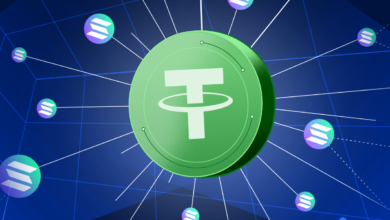The Future of Solar Energy in Residential and Commercial Real Estate

The real estate sector—both residential and commercial—is undergoing a major transformation thanks to the rise of renewable energy solutions. Among them, solar energy stands out as the most accessible, scalable, and eco-friendly solution. With the increasing urgency of climate change, rising electricity costs, and demand for sustainable buildings, solar power is rapidly becoming a cornerstone of modern real estate development.
In this article, we’ll explore the future of solar energy in real estate, its key benefits, technological advancements, government support, challenges, and how developers and homeowners are embracing this green revolution.
Why Solar Energy is the Future of Real Estate
1. Increasing Energy Costs
One of the primary drivers pushing both homeowners and businesses toward solar energy is the rising cost of traditional electricity. With solar panels, property owners can generate their own electricity, reducing reliance on utility companies and locking in lower energy costs for years. But you can Read more about montering af solceller
2. Environmental Responsibility and ESG Goals
As sustainability becomes a global priority, companies and homeowners are increasingly concerned with their carbon footprint. Solar energy offers a clean, renewable alternative that supports environmental, social, and governance (ESG) goals. For commercial real estate, solar-powered buildings often attract tenants who value eco-conscious business practices.
3. Government Incentives and Subsidies
To promote renewable energy adoption, many governments provide tax incentives, rebates, and net metering programs. These financial benefits significantly lower the upfront cost of solar panel installation, making it a smart investment for real estate developers and property buyers.
Solar Energy in Residential Real Estate
1. Rising Demand for Solar Homes
Today’s homebuyers are actively seeking energy-efficient homes with solar panels. In fact, studies show that homes with solar installations sell faster and at a premium. This trend is expected to accelerate as more people seek ways to reduce utility bills and embrace sustainable living.
2. Net-Zero and Off-Grid Living
A growing number of homeowners are interested in net-zero homes—properties that produce as much energy as they consume. Solar energy, combined with battery storage and efficient appliances, makes this goal achievable. In rural or remote areas, off-grid homes powered by solar are becoming increasingly popular.
3. Smart Solar Homes
Modern residential properties are also integrating smart technologies with solar energy systems. Smart meters, inverters, and monitoring apps allow homeowners to track their energy production and consumption in real time, optimizing savings and reducing waste.
Read Also: Resources and Services for Successful Business Operations
Solar Energy in Commercial Real Estate
1. Energy Efficiency for Businesses
Commercial buildings such as offices, warehouses, and shopping centers consume massive amounts of electricity. By installing solar panels, businesses can significantly reduce operational costs, improve sustainability, and hedge against energy price fluctuations.
2. Corporate Sustainability and Brand Value
Installing solar energy systems enhances a company’s corporate image. Green buildings are a powerful statement that shows commitment to sustainability. Many companies now choose office spaces that reflect their values—solar-powered buildings meet that demand perfectly.
3. LEED Certification and Green Building Standards
Commercial properties with solar installations are more likely to earn LEED (Leadership in Energy and Environmental Design) certifications and comply with green building standards. These certifications increase a building’s market value and attract eco-conscious tenants.
Technological Advancements Driving Solar Adoption
1. High-Efficiency Solar Panels
Modern solar panels are now more efficient than ever. Innovations in monocrystalline and bifacial panels have dramatically improved energy conversion rates, even in cloudy or shaded environments. These high-output panels are ideal for urban buildings with limited roof space.
2. Solar Shingles and Building-Integrated Photovoltaics (BIPV)
Instead of bulky panels, solar shingles and BIPV systems are seamlessly integrated into building materials. These solutions offer aesthetic appeal while providing the same functionality as traditional solar systems—an ideal option for residential and commercial architects.
3. Battery Storage and Energy Independence
The integration of lithium-ion batteries and Tesla Powerwalls enables buildings to store excess solar energy for use at night or during power outages. This enhances energy security, especially in areas with unstable electricity grids but you should purchase from reliable sources like solee.
Regional Growth Trends and Market Projections
1. United States and Europe Leading the Way
Countries like the U.S., Germany, Netherlands, and Spain are rapidly adopting solar energy in both residential and commercial sectors. Net metering, feed-in tariffs, and favorable solar legislation have made solar installations widespread and cost-effective.
2. Emerging Markets: Asia and Africa
Developing regions are also seeing significant growth in solar energy adoption. In countries like India, Pakistan, Kenya, and Bangladesh, solar installations are revolutionizing access to electricity in both urban and rural real estate projects.
3. Global Market Outlook
According to IEA and BloombergNEF, the global solar power market is expected to grow at a CAGR of over 20% by 2030, with the real estate sector being one of the major contributors to this growth.
Benefits of Solar Energy for Property Owners
✔ Lower Utility Bills
Reduce or eliminate electricity costs over the lifespan of the solar system (typically 25–30 years).
✔ Increased Property Value
Studies show that homes with solar panels can sell for 4%–6% more than homes without them.
✔ Tax Benefits and Rebates
Enjoy federal tax credits, local incentives, and state-level grants that make solar more affordable.
✔ Energy Independence
Reduce reliance on the grid and protect against energy price hikes.
✔ Environmental Impact
Significantly reduce your carbon emissions and help combat global warming.
Challenges in Widespread Adoption
1. High Upfront Costs
Although prices have dropped considerably, the initial investment in solar panels and batteries remains a barrier for many homeowners and small businesses.
2. Regulatory and Zoning Issues
In some regions, zoning laws and homeowners’ associations restrict solar panel installations due to aesthetic concerns or building codes.
3. Maintenance and Durability Concerns
While solar systems are low-maintenance, cleaning panels and replacing inverters can be a concern for some property owners unfamiliar with the technology.
4. Grid Compatibility and Net Metering Policies
Inconsistent net metering laws and grid integration policies across regions can affect the return on investment for solar projects.
The Role of Real Estate Developers and Investors
1. Solar-Ready Construction
Forward-thinking developers are building solar-ready homes and offices, with pre-installed wiring and roof orientations designed to optimize solar efficiency.
2. Green Real Estate Investments
Real estate investment trusts (REITs) and private equity firms are pouring capital into solar-powered commercial complexes and eco-friendly housing projects, recognizing their long-term profitability.
3. Collaboration with Solar Providers
Developers are partnering with solar companies to offer bundled deals or solar-as-a-service plans, where buyers can get solar installations with no upfront cost and pay monthly, just like a utility.
The Future Outlook: A Solar-Powered Real Estate Industry
The fusion of solar technology and real estate is not just a passing trend—it’s a foundational shift in how buildings are designed, built, and powered. As solar panel efficiency continues to improve, battery storage becomes more accessible, and governments support clean energy, we’ll see:
- Entire solar-powered communities and smart cities emerge.
- Mandates for solar installations on new buildings in many regions.
- A more decentralized, resilient energy grid supported by building-generated power.
Conclusion
The future of solar energy in residential and commercial real estate is bright, sustainable, and financially rewarding. Whether you’re a homeowner looking to cut costs, a developer aiming to increase property value, or an investor seeking high-growth opportunities, solar energy is the key to staying ahead in a rapidly evolving market.
Embracing solar isn’t just about adopting new technology—it’s about future-proofing your property, contributing to a cleaner planet, and meeting the demands of a new generation of eco-conscious buyers and tenants.
FAQs
Q1. Is solar energy suitable for all types of properties?
Yes, solar systems can be adapted for most residential and commercial buildings, though factors like roof size, angle, and shading play a role.
Q2. How long does a solar installation last?
Solar panels typically last 25–30 years, with some systems performing efficiently even beyond that.
Q3. Can solar panels work during cloudy days or at night?
Yes, they generate some energy on cloudy days. At night, battery storage systems or grid power take over.
Q4. What are the financial benefits of installing solar on commercial buildings?
Commercial properties benefit from reduced utility costs, tax incentives, increased asset value, and improved tenant retention.
Q5. Are there financing options available for solar installations?
Yes, many regions offer solar loans, leasing options, and power purchase agreements (PPAs) to make solar more accessible.





